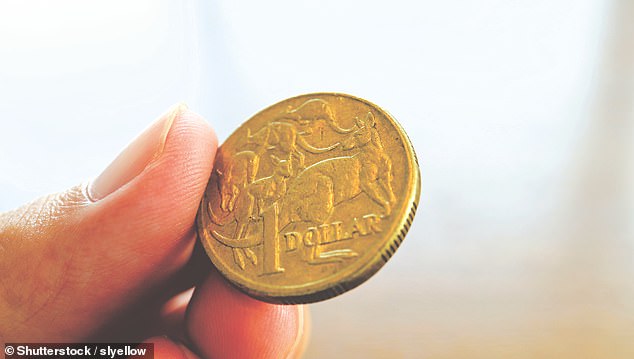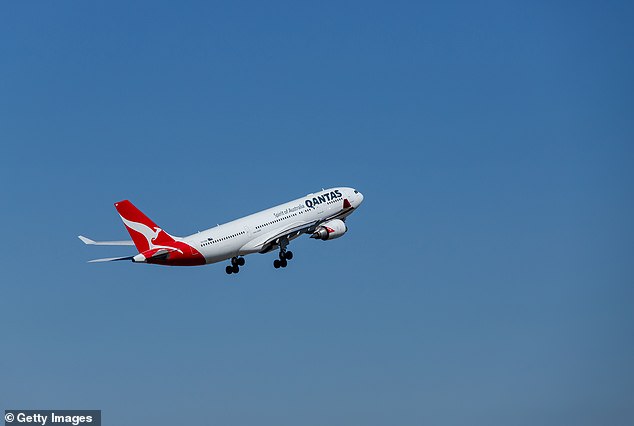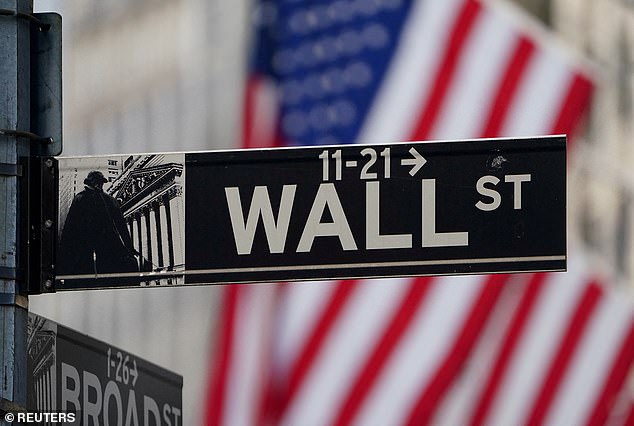Why the Australian dollar is in freefall – what it means for you and why it could keep plummeting
The Australian dollar fell below 63 cents for the first time in a year this week as investors piled into the US dollar – and one major bank fears the dollar will fall further.
A weaker local currency means people traveling to places like the United States will pay a lot more for a holiday.
A fall in the Australian dollar also coincided with the price of unleaded products rising back above $2 per litre, with petrol bills rising 14 per cent in the year to August as inflation turned around.
At the end of January, the Australian dollar was still worth 71 US cents.
Westpac senior currency strategist Sean Callow, who recently paid $6 for a cappuccino visiting the US, now expects the Australian dollar to fall to 62 US cents by the end of October.
“We’re inclined to think it probably has another leg lower,” he told Daily Mail Australia.
“That would most likely be within the next month or so, sometime later in October.”
The Australian dollar fell to a one-year low of 62.86 US cents on Wednesday morning.

The Australian dollar fell below 63 US cents this week for the first time in a year. Westpac senior currency strategist Sean Callow, who recently paid $6 for a cappuccino visiting the US, now expects the Australian dollar to fall to 62 US cents by the end of October. He says 60 cents cannot be ruled out.
Although the rate has since recovered to 63.62 US cents on Friday afternoon, Callow said a drop to 60 US cents cannot be ruled out – a level not seen since March 2020, at the start of the Covid pandemic.
“It is indeed possible,” he said.
“It would be foolish to rule everything out with the Australian dollar.
“We underestimated the strength of the US dollar this year. I think this was one of the big misses for the year.”
The weakness of the Australian dollar is due to the difference between US and Australian interest rates.
While the Reserve Bank of Australia’s cash rate is at an 11-year high of 4.1 percent, the US Federal Reserve’s equivalent federal funds rate is even higher, at 5.25 to 5.5 percent .
This means that the US government must offer high annual interest payments on its government bonds, with investors lending money to get their money back at maturity.
US 10-year government bonds offer a yield of 4.88 percent, the highest since 2007, compared with 4.55 percent in Australia.
The US stock market is also set to decline for the fifth week in a row, making currencies like the Australian dollar less attractive to speculators who favor the currency during times of strong global economic growth.
“That’s essentially how I view it, as a currency for good times,” Callow said.
A year ago, the Australian dollar fell below 63 US cents when Chinese President Xi Jinping addressed the 20th National Congress of the Chinese Communist Party and declared he would stick to Covid zero.
A year on, currency markets are concerned about sluggish economic growth in China, Australia’s largest trading partner, which is dependent on iron ore from Western Australia.
“You’re concerned about Australia’s export prospects,” Callow said.
Nevertheless, Australia posted a trade surplus of $9.64 billion in August, up $2.316 billion or 31.6 percent in a month.


A weaker local currency means people traveling to places like the United States will pay a lot more for a holiday
“That’s one of the reasons why we’re a bit surprised that the Australian can be as weak as it has been this year,” Mr Callow said.
“The trading position is historically strong – surpluses are lower than a year or two ago, but they are still significant and that is helping to limit the negative impact on Australians.”
That means it will most likely stay above 60 cents.
While that would be below the four-decade average of 75 cents, it would still be well above all-time lows since the float.
The Australian dollar’s all-time low was reached in April 2001 when it fell to 47.78 US cents as the US economy fell into recession following the burst of the dot-com bubble.
In times of unrest, investors have traditionally flocked to the US dollar.
At the start of the Covid pandemic in March 2020, the Australian dollar fell to 55.71 US cents, down from 69 US cents at the end of January, but quickly recovered.


The US stock market is also set to decline for the fifth week in a row, making currencies like the Australian dollar less attractive to speculators (pictured is the New York Stock Exchange).
During the 2008 global financial crisis, the Australian dollar crashed from a 25-year high of 98.49 US cents in July that year to 60.12 US cents at the end of October.
Ten years earlier, in 1997, the Australian dollar plummeted during the Asian financial crisis, from 79.44 US cents at the start of the year to 57 US cents in September 1998.
But David Llewellyn-Smith, the chief strategist at MB Super and Nucleus Wealth, predicts the local currency will fall to an all-time low of 40 US cents within five years as the Chinese economy stagnates.
